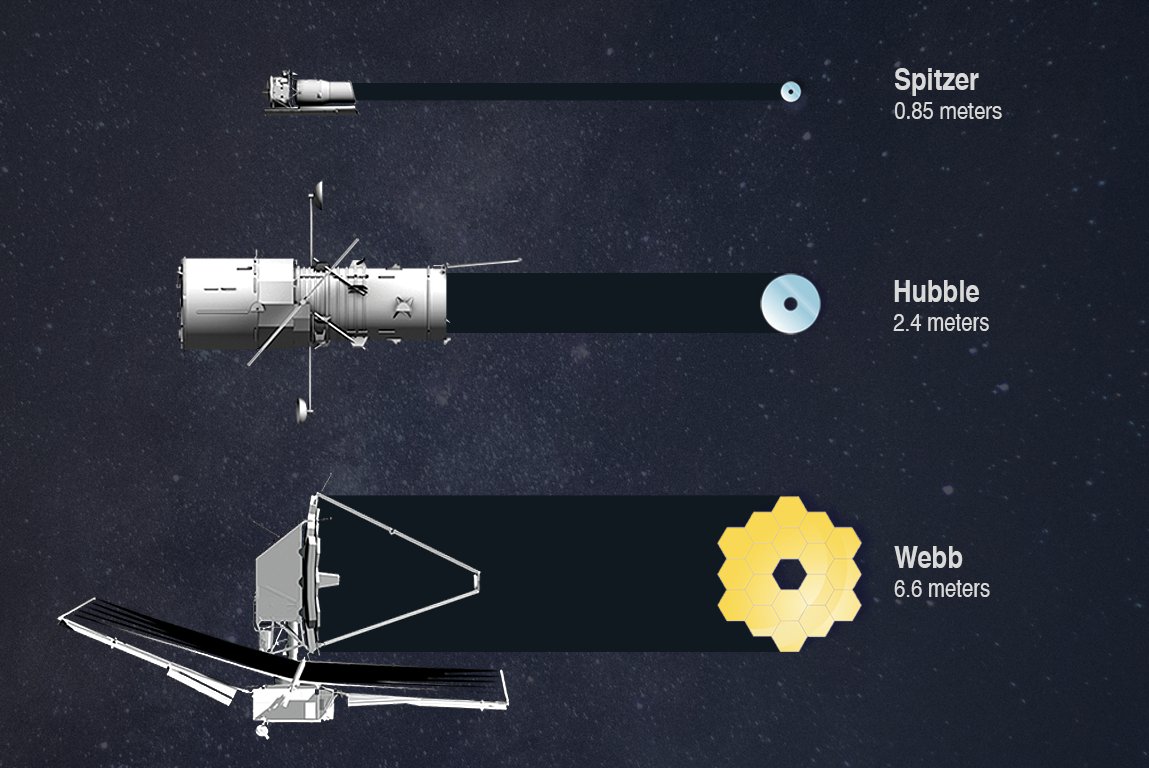
The bigger the telescope, the better its vision. @NASAWebb is the largest telescope NASA has ever sent into space. Webb is designed to be as light as possible, but still measure large enough to achieve its scientific goals: bit.ly/3icJRa4 Credit: NASA. #AAS238 (1/10) 

Webb’s key components include an enormous primary mirror to collect infrared light, a supersized sunshield to keep the telescope cold, and four scientific instruments to conduct its ambitious science operations. Credit: NASA. #AAS238 (2/10) 

Webb’s primary mirror towers more than two stories high. For the telescope to fit in the launch vehicle, an Ariane 5 rocket, it must fold origami-style to about a quarter of its full size, then unfold on its way to its orbit location. #AAS238 (3/10)
The purpose of Webb’s 6.6-meter primary mirror is to collect infrared light traveling through space. The larger a mirror, the more light it can collect over a given period of time. A larger mirror can therefore detect dimmer or more distant objects. Credit: STScI. #AAS238 (4/10) 

Webb’s primary and secondary mirrors are composed of strong, light and durable beryllium metal with a thin coating of gold to reflect infrared light. The total amount of gold on the mirrors is only about 50 grams, which would fit into a sphere the size of a marble. #AAS238 (5/10)
The tennis-court-sized sunshield is potentially the Webb telescope’s most distinctive feature. The sunshield will provide a cold and thermally stable environment for the telescope and its instruments. Credit: NASA. #AAS238 (6/10) 

For the sunshield to work, Webb must be in an orbit where the Sun, Earth, and Moon remain in the same direction, away from the telescope on the far side of the sunshield. That orbit is known as the semi-stable Lagrange point L2. #AAS238 (7/10)
Webb's sunshield plays a vital role in protecting the telescope from unwanted infrared radiation. The separated five-layer design insulates the telescope, keeping light from overheating the mirror and scientific instruments. Credit: STScI. #AAS238 (8/10) 

The sunshield consists of five layers of a heat-resistant, strong material called Kapton, which is coated in aluminum and silicon. Not long after launch, Webb’s sunshield will slowly unfurl, stretched taut by cables attached to motors. #AAS238 (9/10)
The Space Telescope Science Institute (@stsci) offers a variety of experts working directly with the telescope and the mission who are prepared to communicate in an understandable, public-friendly manner. Connect with our news team: bit.ly/3ce0n61 #AAS238 (10/10)
• • •
Missing some Tweet in this thread? You can try to
force a refresh







